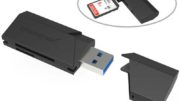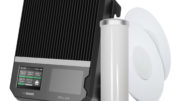The latest wi-fi routers have a maximum rated speed of about 9,600Mbps. You need to know… you will NEVER EVER see that speed. In fact, you may never even see the 54Mbps speed that your 10-year-old router promised. The odds are stacked against you, dear reader, because the laws of physics and the laws of commerce collude to make sure that you just can’t ever get that speed that’s promised to you on the box. Here’s why.
Your internet speed just isn’t that fast.
The average internet speed in the US right now is getting close to 100Mbps. That’s the speed from speed test apps, of course. It has nothing to do with the actual speeds you get from real-world applications. Speeds are going up for sure, but not as quickly as we’d like. Pretty much routers today handle Wi-Fi 5 (formerly known as 802.11ac), which promises 1,500Mbps if it’s done right. You’ll need a much fancier router than your cable company provides if you want to go faster than that, though.No matter how fast your router is, it won’t make up for a low speed limit on the internet.
Max speeds usually only apply to one connection.
Unless you have one of those fancy routers with MIMO technology, the max speed is limited by the number of connections at the same time. If you are downloading to your iPad and your phone at the same time, the speed will suffer. If you’re in a public area, you’re sharing that speed with everyone else. At that point, no one is going that fast.
Maybe your device isn’t fast enough.
Until about 2010, even the fastest wi-fi chips just couldn’t do any better than about 20Mbps. The wireless chip often shared bandwidth with a wired network chip and sometimes even used the central processor of the computer (and they weren’t that fast back then.) Today’s wireless chips are a lot better.
The biggest reason: attenuation
In a perfect world there would be no attenuation. However, it’s a fact that the further away you get from something the weaker its signal becomes. In fact if you travel twice the distance, the signal is 1/4 as strong. Travel 4 times the distance and it’s 1/16 as strong. Keep in mind that doesn’t even count in things like walls and the wires in them, that can block the signal even more.
Attenuation is a problem because as the signal gets weaker, it gets harder and harder to hear it and the device is more likely to make mistakes, or ask the router to repeat what it’s saying. This slows everything down.
Here’s an example of attenuation in action. A wired connection has almost no attenuation… and here’s a speed test from a computer that’s hard-wired to the router in our West Coast Operations Center. Our Ops center has pretty good internet, rated at 300Mbps down and 300 up, and demand was light when the speed test was done. With wired internet, we get that speed as long as no other devices are active on the network. However, add Wi-Fi into the mix, and things change. An iPad held about 6 feet from the router gets about 150Mbps down. On the other side of the building, the same iPad on the same network has vastly different results. It gets about 6Mbps. Which simply…. stinks.
What can be done?
Obviously there are some things you can change. You can get a device with more powerful antennas and place the router carefully to avoid attenuation problems. You can upgrade your hardware and your internet service. But really, the best thing to do is simply to take all those speed ratings with a grain of salt. They just aren’t that accurate.





